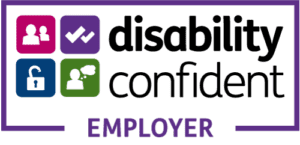Being proactive now could prevent significant financial and reputational costs down the line.

The Government has confirmed that from 1 April 2025, the National Minimum Wage (NMW) and National Living Wage (NLW) rates will increase. This brings fresh compliance risks for employers — especially where wages sit close to the legal thresholds.
Here’s a quick summary of what’s changing, areas where employers can slip up, and why getting it wrong could cost you more than just back pay.
The New Wage Rates from April 2025
From 1 April 2025, the new statutory rates will be:
National Living Wage:
- Aged 21 and over: Increasing from £11.44 to £12.21
National Minimum Wage:
- Aged 18 to 20: Increasing from £8.60 to £10.00
- Aged 16 and 17 and apprentices: Increasing from £6.40 to £7.55
The higher rate takes effect from the start of the next pay reference period following the increase. As a result, a worker’s pay may not increase immediately.
Where it can go wrong
A common misconception is that paying the headline hourly rate is enough. However, several routine practices can unintentionally result in pay falling below the legal minimum, including:
- Deductions for uniforms or equipment: Where costs are passed to workers, these may bring pay below the minimum threshold.
- Incorrect inclusion of overtime or premiums: Employers sometimes mistakenly factor in overtime, shift premiums, or bonuses when calculating compliance with the hourly rate.
- Unpaid working time: Where an employer doesn’t pay for extra time worked before or after shifts.
- On-call time: Failing to pay workers who are required to be at the workplace and available for work, even if not actively working.
- Unpaid time spent travelling: This can include travel for the purposes of salaried hours work, time work, or output work.
It’s crucial to be aware of these potential errors, especially where pay is close to the minimum legal threshold.
Why It Matters
The risks of failing to comply are significant:
Financial Penalties: Employers who underpay face penalties of 200% of the total underpayment, capped at £20,000 per underpaid worker.
Reputational risk: HMRC regularly publishes a “name and shame” list of employers who fail to comply.
What Should Employers Do Now?
With the new rates coming into place soon, now is the time to:
- Review pay structures and check how the new rates will impact staff pay.
- Audit payroll processes to ensure deductions, unpaid time, and on-call arrangements don’t result in breaches.
- Train managers and payroll teams on the practical application of minimum wage rules.
Being proactive now could prevent significant financial and reputational costs down the line.
Our employment experts can help ensure your business and its processes are compliant as well as providing specialist legal advice and support in the event of any allegations of non-compliance.
For help and advice, contact James Taylor at james.taylor@h-f.co.uk.
Related Insights

Employment Rights Bill – Key Updates Employers Need to Know
The Government has unveiled amendments to its proposed Employment Rights Bill (ERB), which it predicts will boost productivity and drive...

Parents’ New Right to Neonatal Leave & Pay: What Employers Need to Know
In another significant step aimed at supporting working parents, a new right to neonatal leave and pay has been announced...

Duty to prevent sexual harassment – EHRC publishes crucial guidance for all employers
The long awaited EHRC guidance has been published ahead of the new sexual harassment prevention duty coming into force on...

Top Tips on Tipping – New Legislation from 1 October 2024
On 1 October 2024, new legislation around gratuities (‘tips’) came into force via The Employment (Allocation) of Tips Act 2023....




